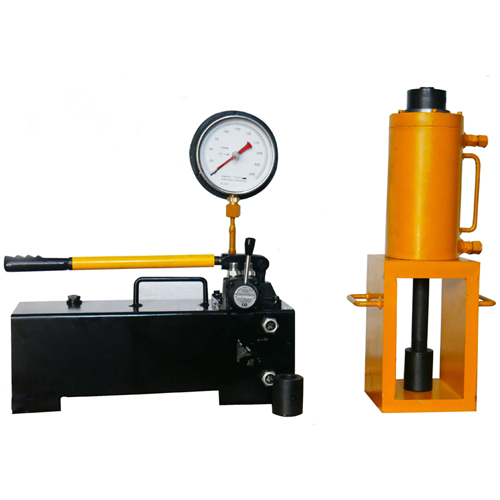Pull Out Test Apparatus

To reduce the
risk of injury, all operators and maintenance personnel must read and
understand these instructions before operating, changing accessories, or
performing maintenance on SE-Test Lab Instruments. All possible situations
cannot be covered in these instructions. Care must be exercised by everyone
using, Maintaining or working near this equipment.
- Safety
- The below safety instructions must be followed to avoid any property damage, personal injury, or possible death.
- These machines must be operated by well-trained personnel and for its intended purpose only.
- The owner and/or user of the machine must comply with the regulations of Labor Protection in the country.
- Keep the work area clean and free from obstacles.
- Keep any unauthorized personnel away from the machine during the operation.
Hydraulic Hand Pumps
The function of a hydraulic hand pump is to convey hydraulic oil (no-load stroke) and to generate pressure, which will be converted by the hydraulic cylinder into force (loaded stroke). Hydraulic hand pumps are independent from energy and can be used in every- day applications. They are easily portable and render an extremely highpower generation in connection with a corresponding hydraulic cylinder.
Hand pumps require certain manpower and are often replaced by motor pumps in case of permanent duty and high oil quantities respectively.

Direction Valve

Directional valvesare required to control the direction of the oil flowand thus the work motions of the connected hydrauliccylinder (Forward – Neutral – Reverse)
Double Acting Hydraulic Cylinder
The piston travel is achievedvia hydraulic pressure inboth directions.(Push forces and pullingforces are possible).
Installation/Operation
Connect hydraulic pump with double acting hydraulic jack with the help of housing pipe.
Connect reverse line with reverse and forward with forward line.

Central-hole jack should be fitted~ in anchor bar. Two dial gauges,should be fitted on diagonallyopposite sides of central-hole jack to record the movement of the anchorbar at the time of loading.
Pressure should be applied, with the help of hydraulic pumpconnected with the central-hole jack of 250kN capacity having a centralhole of 60 mm with uniform but SLOW rate of 250 kg/min as the pulling. During the application of pressure of the dial gauge observation should also be recorded at every load interval of tonne. The plot of pull versus bolt extension should also be made as shown below mention figure.


An initial arbitrary load not greater than 5 kN shall be applied totake up slack in the equipment.
The anchor/rock belt shall be tested by increasing the load in increments until total extension greater than 40 mm reached or bolt yields orfractures whichever is early.
Readings for each increment shall be taken only after both load andextension are stabilized.


